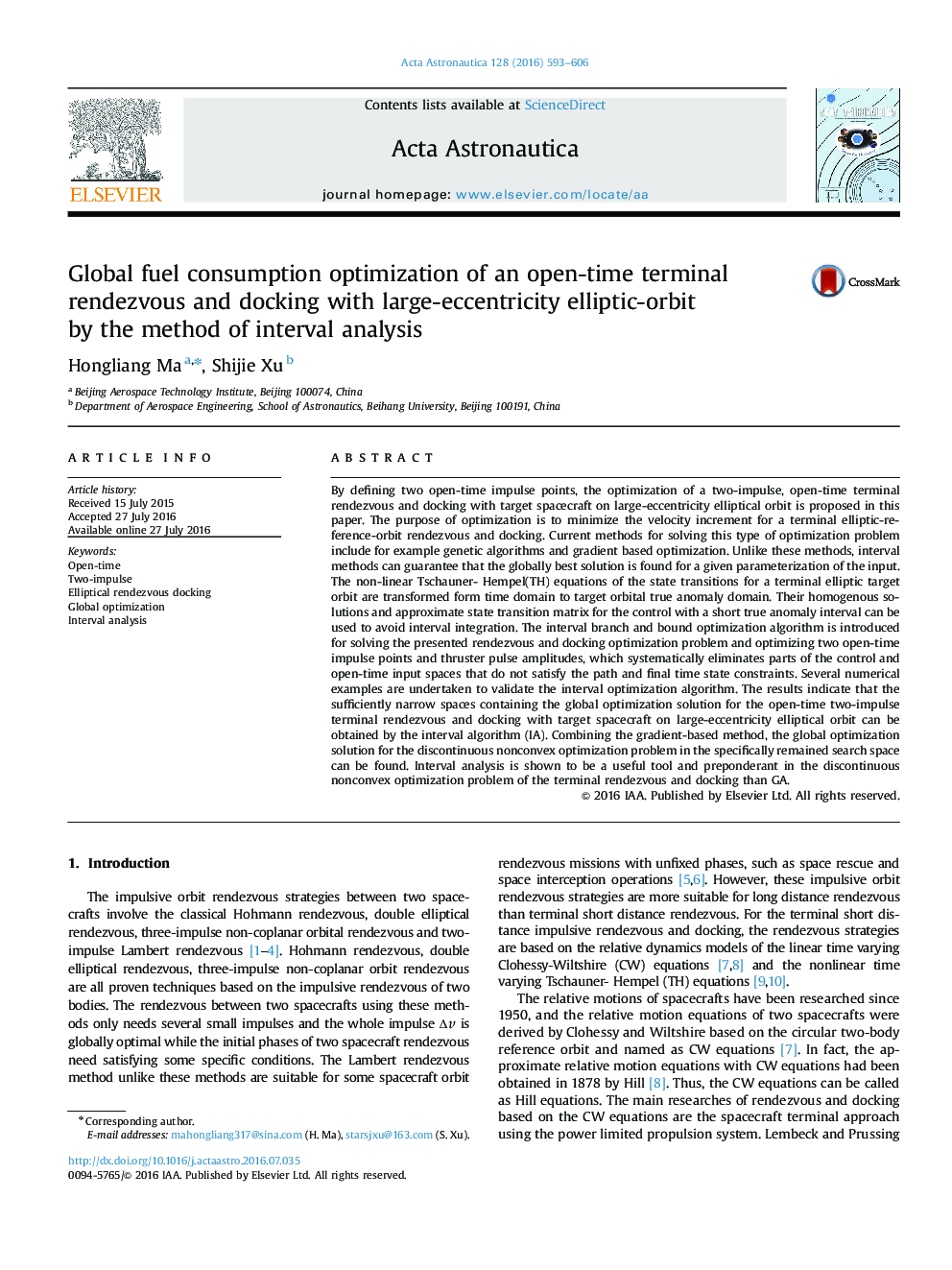| Article ID | Journal | Published Year | Pages | File Type |
|---|---|---|---|---|
| 1714182 | Acta Astronautica | 2016 | 14 Pages |
•Terminal rendezvous and docking optimized via interval analysis (IA) is proposed.•Rendezvous optimization problem with strong nonlinearity and nonconvexity is solved.•Global optimality of open-time rendezvous optimization using IA is verified.•Discontinuous and nonconvex optimization problem can be processed by interval analysis.•IA and gradient-based method can process global rendezvous optimization.
By defining two open-time impulse points, the optimization of a two-impulse, open-time terminal rendezvous and docking with target spacecraft on large-eccentricity elliptical orbit is proposed in this paper. The purpose of optimization is to minimize the velocity increment for a terminal elliptic-reference-orbit rendezvous and docking. Current methods for solving this type of optimization problem include for example genetic algorithms and gradient based optimization. Unlike these methods, interval methods can guarantee that the globally best solution is found for a given parameterization of the input. The non-linear Tschauner- Hempel(TH) equations of the state transitions for a terminal elliptic target orbit are transformed form time domain to target orbital true anomaly domain. Their homogenous solutions and approximate state transition matrix for the control with a short true anomaly interval can be used to avoid interval integration. The interval branch and bound optimization algorithm is introduced for solving the presented rendezvous and docking optimization problem and optimizing two open-time impulse points and thruster pulse amplitudes, which systematically eliminates parts of the control and open-time input spaces that do not satisfy the path and final time state constraints. Several numerical examples are undertaken to validate the interval optimization algorithm. The results indicate that the sufficiently narrow spaces containing the global optimization solution for the open-time two-impulse terminal rendezvous and docking with target spacecraft on large-eccentricity elliptical orbit can be obtained by the interval algorithm (IA). Combining the gradient-based method, the global optimization solution for the discontinuous nonconvex optimization problem in the specifically remained search space can be found. Interval analysis is shown to be a useful tool and preponderant in the discontinuous nonconvex optimization problem of the terminal rendezvous and docking than GA.
